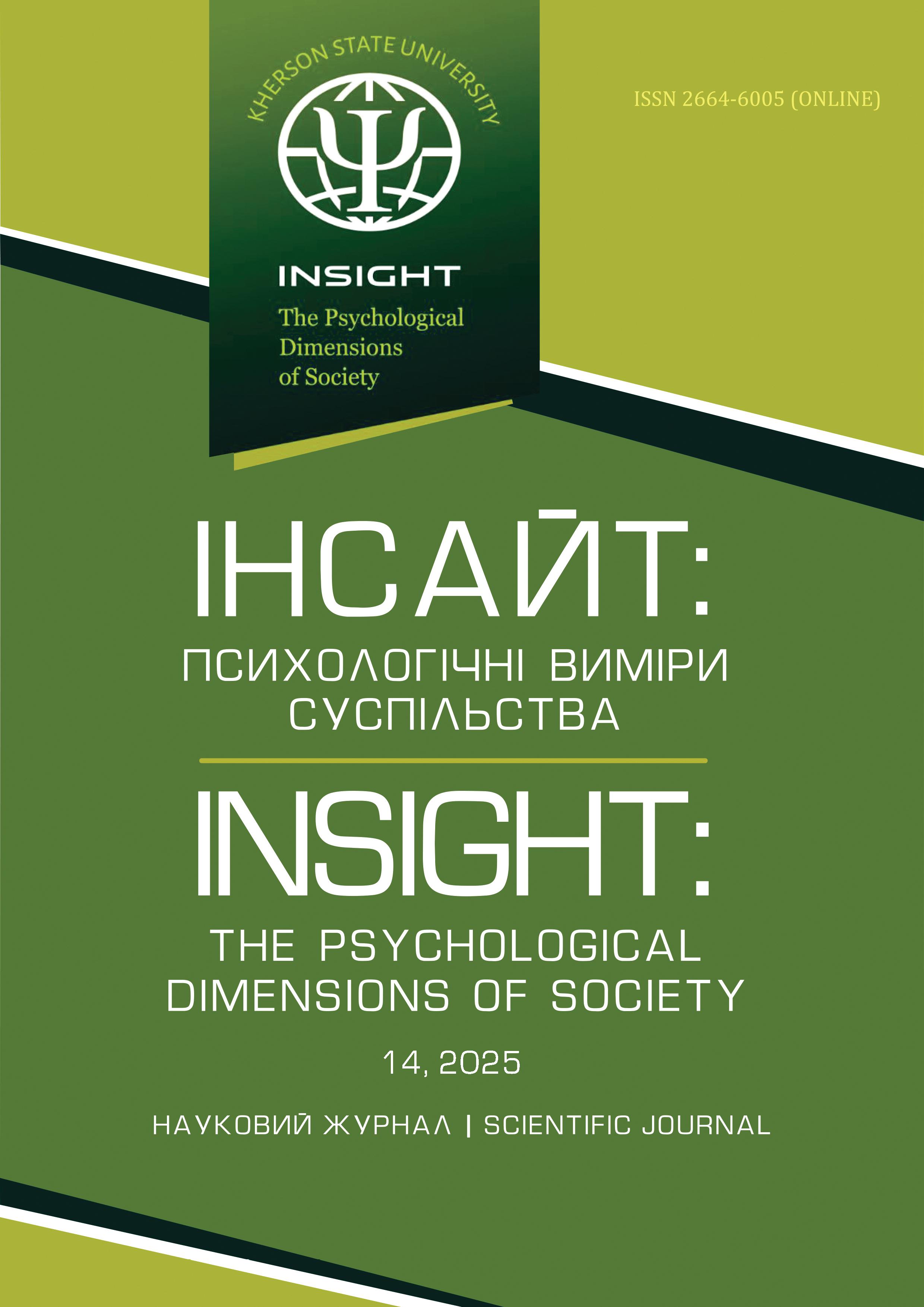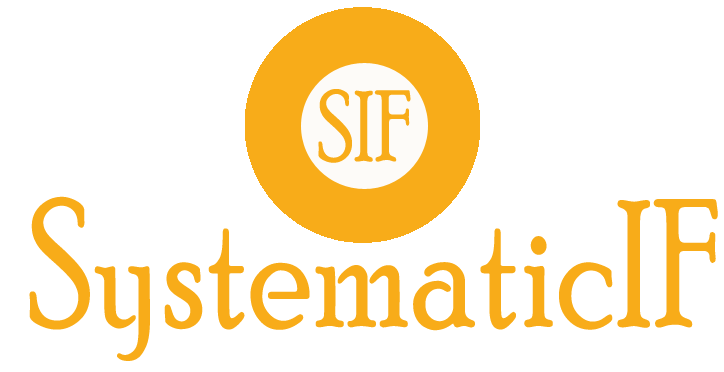Ukrainian Adaptation of the Brief-COPE Questionnaire
Abstract
The purpose of the research was to adapt the Brief-COPE (Carver et al., 1997) into Ukrainian. In the currentconditions of military aggression, it is increasinglyimportant to study its consequences for the mentalhealth of millions of Ukrainians, in particular, to investigate strategies for overcoming stress, which willallow developing effective methods of psychologicalassistance. The Ukrainian version of the Brief-COPE(Carver et al., 1997), which is widely used worldwide,will give the opportunity to use it practically in psychodiagnostics,as well as the possibility of conductingcomparative studies. Methods. The Brief-COPEquestionnaire was translated from English into Ukrainianby two bilingual psychologists using the reversetranslation method. The study sample consistedof 192 respondents aged 17 to 44 years (M=23.12,SD=6.32), mostly students and young working adults.The survey was conducted through the online serviceGoogle Forms. The respondents were offered a situationalversion of the methodology; the retest took place10-45 days after the test. Also, the respondents wereoffered the Stress Coping Inventory (SVF120, Jankeet al, 1985) in the adaptation of N. Vodopianova. Thedata were analyzed using statistical data processingpackages SPSS, JAMOVI; the following methods wereused: descriptive statistics, scale reliability analysis,confirmatory factor analysis (CFA), exploratory factoranalysis (EFA) and correlation analysis (Spearman'scoefficient). Reliability was investigated onthe basis of Cronbach’s model with the calculationof the alpha coefficient of consistency. Results. Theresults of the study indicate a fairly good consistencyof the data obtained with the basic theoretical modelof the methodology, with the exception of some scales,which correspond to the data of foreign studies oncertain controversy of the factor structure of the Brief-COPE. The content validity test revealed a significantnumber of strong correlations. A high level of test-retestreliability of the adapted tool has been revealed.The results of the obtained data are compared withthe data of foreign studies using Brief-COPE. Discussionand conclusions. The test of the psychometriccharacteristics of the Ukrainian version of the BriefCOPE inventory (Carver, 1997) showed a fairly highinternal validity and reliability of the adapted methodology.Thus, it can be argued that the Ukrainian versionof the Brief COPE inventory (Carver, 1997) can be usedin studies to measure an individual’s coping behavior.
Downloads
References
Bongelli, R., Fermani, A., Canestrari, C., Riccioni, I., Muzi, M., Bertolazzi, A., & Burro, R. (2022). Italian validation of the situational Brief Cope Scale (I-Brief Cope). Plos one, 17(12), https://doi.org/10.1371/journal.pone.0278486
Baghoori, D., Roduta Roberts, M., & Chen, S. P. (2022). Mental health, coping strategies, and social support among international students at a Canadian university. Journal of American college health, 1–12. https://doi.org/10.1080/07448481.2022.2114803
Caporossi, J., Trouillet, R., & Brouillet, D. (2018). Validation de la version française d’une échelle abrégée de coping religieux: Brief-RCOPE. Psychologie francaise, 63(2), 201–215. https://doi.org/10.1016/j.psfr.2011.12.001
Carver, C. S. (1997). You want to measure coping but your protocol’s too long: Consider the Brief COPE. International Journal of Behavioral Medicine, 4, 92–100. https:doi.org/10.1207/s15327558ijbm0401_6
Carver, C. S., & Connor-Smith, J. (2010). Personality and coping. Annual Review of Psychology, 61, 679-704. https://doi.org/10.1146/annurev.psych.093008.100352
Carver, C. S., & Scheier, M. F. (1994). Situational coping and coping dispositions in a stressful transaction. Journal of Personality and Social Psychology, 66(1), 184–195. https://doi.org/10.1037/0022-3514.66.1.184
Carver, C. S., Scheier, M. F., & Weintraub, J. K. (1989). Assessing coping strategies: A theoretically based approach. Journal of Personality and Social Psychology, 56(2), 267–283. https://doi.org/10.1037/0022-3514.56.2.267
Cramer, R. J., Braitman, A., Bryson, C. N., Long, M. M., & La Guardia, A. C. (2020). The brief COPE: Factor structure and associations with self- and other-directed aggression among emerging adults. Evaluation and the Health Professions, 43(2), 120–130. https://doi.org/10.1177/0163278719873698
Endler, N. S., & Parker, J. D. (1990). Multidimensional assessment of coping: A critical evaluation. Journal of Personality and Social Psychology, 58(5), 844–854. https://doi.org/10.1037/0022-3514.58.5.844
Endler, N. S., & Parker, J. D. A. (1994). Assessment of multidimensional coping: Task, emotion, and avoidance strategies. Psychological Assessment, 6(1), 50–60. https://doi.org/10.1037/1040-3590.6.1.50
Fernández-Martín, F. D., Flores-Carmona, L., & Arco-Tirado, J. L. (2022). Coping Strategies Among Undergraduates: Spanish Adaptation and Validation of the Brief-COPE Inventory. Psychology Research and Behavior Management, 15, 991–1003. https://doi.org/10.2147/PRBM.S356288
Folkman, S., & Lazarus, R. S. Ways of Coping Questionnaire. Palo Alto, CA: Consulting: Psychological Press. 1988. https://link.springer.com/referenceworkentry/10.1007/978-94-007-0753-5_3198
Folkman, S. (1984). Personal control and stress and coping processes: a theoretical analysis. Journal of Personality and Social Psychology, 46, 839–852. https://doi.org/10.1037//0022-3514.46.4.839
García, F. E., Barraza-Peña, C. G., Wlodarczyk, A., Alvear-Carrasco, M., & Reyes-Reyes, A. (2018). Psychometric properties of the brief-COPE for the evaluation of coping strategies in the Chilean population. Psicologia: Reflexao e Critica, 31(1). https://doi.org/10.1186/s41155-018-0102-3
Garfin, D. R., Thompson, R., & Holman, E. A. (2018). Mental and physical health effects of acute stress following traumatic events: A systematic review. Journal of Psychosomatic Research, 112, 107–113. https://doi.org/10.1016/j.jpsychores.2018.05.017
Halamová, J., Kanovský, M., Krizova, K., Greškovičová, K., Strnádelová, B., & Baránková, M. (2022). The factor structure and external validity of the COPE 60 inventory in Slovak translation. Frontiers in Psychology, 12. https://doi.org/10.3389/fpsyg.2021.800166
Hegarty, D., & Buchanan, B. (2021). The Value of NovoPsych Data – New Norms for the Brief-COPE. NovoPsych https://novopsych.com.au/news/the-valueof-novopsych-data-new-norms-for-the-brief-cope/
Hobfoll, S. E., Dunahoo, C. L., Ben-Porath, Y., & Monnier, J. (1994). Gender and coping: The dual-axis model of coping. American Journal of Community Psychology, 22, 49–82. https://psycnet.apa.org/doi/10.1007/BF02506817
Janke, W., Erdmann, G., Kallus, K. W., & Boucsein, W. (1997). Streßverarbeitungsfragebogen:(SVF 120). Hogrefe, Verlag für Psychologie. https://link.springer.com/chapter/10.1007/978-3-86226-391-2_11
Kovalenko, Y. V. (2019). Adaptation and validation of the Ukrainian dispositional ‘COPE’ Questionnaire. Visnyk Universytetu Imeni Alfreda Nobelya.
Seriya “Pedahohika I psyholohiya”. Pedagogichni nauky – Bulletin of Alfred Nobel University. Series “Pedagogy and Psychology”. Pedagogical sciences, 2(18), 75–84. https://pedpsy.duan.edu.ua/images/PDF/2019/2/10.pdf
Mackay, S., Burdayron, R., & Körner, A. (2021). Factor structure of the Brief COPE in patients with melanoma. Canadian Journal of Behavioural Science/Revue canadienne des sciences du comportement, 53(1), 78. https://doi.org/10.1037/cbs0000184
Monzani, D., Steca, P., Greco, A., D’Addario, M., Cappelletti, E., & Pancani, L. (2015). The situational version of the brief COPE: Dimensionality and relationships with goal-related variables. Europe’s Journal of Psychology, 11(2), 295–310. https://doi.org/10.5964/ejop.v11i2.935
Muniandy, M., Richdale, A. L., Arnold, S. R., Trollor, J. N., & Lawson, L. P. (2021). Factor structure and psychometric properties of the brief COPE in autistic older adolescents and adults. Research in Autism Spectrum Disorders, 84. https://doi.org/10.1016/j.rasd.2021.101764
Peters, R. M., Solberg, M. A., Templin, T. N., & Cassidy-Bushrow, A. E. (2020).
Poulus, D., Coulter, T. J., Trotter, M. G., & Polman, R. (2020). Stress and Coping in Esports and the Influence of Mental Toughness. Frontiers in Psychology, 11, 628. https://doi.org/10.3389/fpsyg.2020.00628
Rajesh, C., Ashok, L., Rao, C. R., Kamath, V. G., Kamath, A., Sekaran, V. C., ... & Swamy, V. T. (2022). Psychological well-being and coping strategies among secondary school teachers: A cross-sectional study. Journal of Education and Health Promotion, 11. 152. https://doi.org/10.4103%2Fjehp.jehp_1248_21
Schwarzer, R., & Schwarzer, C. (1996). A critical survey of coping instruments. Handbook of coping: Theory, research, applications, 107–132. https://userpage.fu-berlin.de/gesund/publicat/copchap6.htm
Solberg, M. A., Gridley, M. K., & Peters, R. M. (2022) The Factor Structure of the Brief Cope: A Systematic Review. Western Journal of Nursing Research, 44(6), 612–627. https://doi.org/10.1177/01939459211012044
Tang, K., Chan, C., Ng, J., & Yip, C. H. (2016). Action typebased factorial structure of brief COPE among Hong Kong Chinese. Journal of Psychopathology & Behavioral Assessment, 38(4), 631–644. https://doi.org/10.1007/s10862-016-9551-0
Van Gils, Y., Bleijenbergh, R., Brosens, C., Van den Branden, L., Rimaux, S., & Kuipers, Y. J. (2022). The validation of the brief COPE in a Belgian perinatal population. Maternal and Child Health Journal, 26(10), 2050–2059. https://doi.org/10.1007/s10995-022-03476-5
Vodopyanova, N. E. (2009). Psihodiagnostika stressa [Psychodiagnostics of stress]. Izdatelskiy dom “Piter” – Publishing house “Peter”, 336 p. https://shorturl.at/DKOR2
Weeratunga, E., Senadheera, C., Hettiarachchi, M., & Perera, B. (2022). Validation of the Sinhalese Version of Brief COPE Scale for patients with cancer in Sri Lanka. BMC psychology, 10(1), 1–11. https://doi.org/10.1186/s40359-022-00863-z
Authors who publish with scientific journal agree to the following terms:
• All scientific papers may be freely copied and distributed on any medium and in any format, provided that the references to the initial data of the scientific work are indicated.
• Authors retain copyright and grant the journal right of first publication with the work simultaneously licensed Creative Commons Attribution License .
• Authors are able to enter into separate, additional contractual arrangements for the non- exclusive distribution of the journal’s published version of the work (institutional repository, your website, monograph), with an acknowledgement of its initial publication in this journal.





































